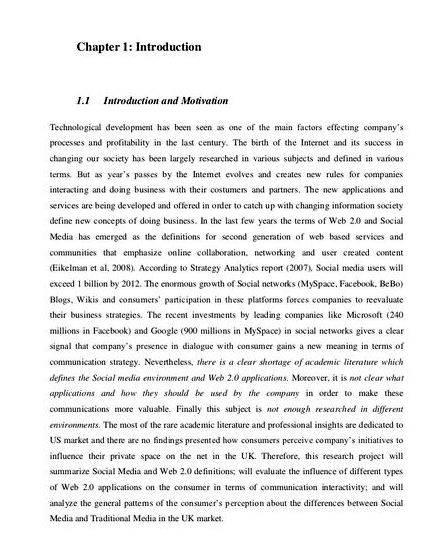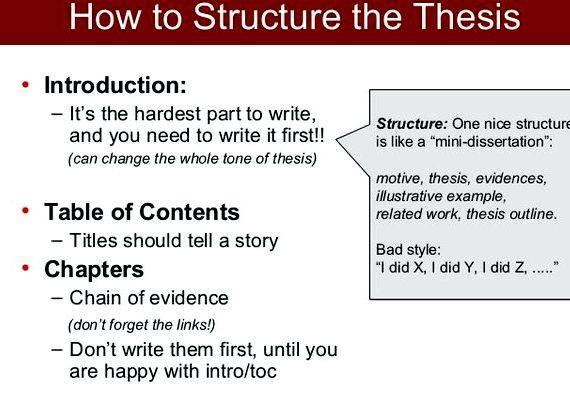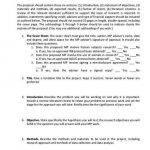Good beginning makes a good ending. This is especially true about writing dissertation introduction. The more powerful introduction you will craft the more chances you have to impress your examiner and thus make a good showing as a mature and experienced researcher. More than that, an introduction serves a motivation to read the entire dissertation. And so this task requires even more responsibility.
This is what makes students paralyzed with fear and panic. They feel totally embarrassed and don’t know whether it is better to write introduction first or leave it till last.
Actually, there is no common ground concerning this question. Of course, your introductory part will look more engaging, well-though-out and complete if you work on it after all dissertation chapters have been written. However, some students prefer to get started right after they have finished research to put their findings straight on paper.
In fact, it doesn’t matter much what approach you will settle upon. What’s really important is the following:
- Don’t panic! Have a plan and allocate enough time to get it done;
- Analyze your findings and turn them into organized source of ideas;
- Identify primary dissertation focus;
- Have important information at hand;
And for the last, set up for success.
How to write introduction for dissertation: Step by step guide
Once you have set yourself for efficient work, define what exactly your introduction must include.
Running ahead of the story, there are many aspects that should be covered in introductory part of the dissertation. This may sound a bit scaring, but when we break down everything into simple parts, the whole introduction writing process won’t seem that daunting anymore.
Let’s get started!
- First, it’s trite to say, but the introduction should introduce the topic of the paper giving a sound explanation of the topic importance and predicted contribution it’s going to make.
- Secondly, it should state the core problem clearly for the audience to get a motivation for further reading. Actually, the problem statement is a vital element for an introductory part. After all, there would be no reason in writing dissertation if there were no problem.
- Thirdly, highlight key ideas that serve to bind all dissertation chapters. This is writing all important ideas in general form to give a reader a clear vision of what each dissertation chapter will be about;
- Finally, offer a solution to the problem or at least give readers a hint about how your investigation can contribute to the area you have explored.
Extra tips on how to write dissertation introduction
The main mission of the introduction is to make the audience read the rest of your dissertation. And what can be more persuasive than words? Consequently, mind the following language aspects when writing introduction for dissertation:
- Start with attention-grabbing statement that will sparkle readers’ interest towards your paper;
- Stick to the formal style, avoiding conversational language unless this is allowed by your supervisor and is relevant to the dissertation topic;
- Keep your introduction concise. Avoid details and leave enough space for intrigue.
Following these tips will lead you to a strong dissertation introduction.

If, however, you need more help, royaldissertation.co.uk is always ready to assist you.
Writing a powerful dissertation introduction as well, any dissertation chapter is no problem for us. All you have to do is place an order or contact us, and we will deliver original, high-quality piece of writing absolutely consistent with your instructions and matching your doctoral degree expectations. With royaldissertation.co.uk, you gat a unique chance to save time and money working on the most significant project in your academic career.
The introduction to your dissertation or thesis may well be the last part that you complete, excepting perhaps the abstract. However, it should not be the last part that you think about.
You should write a draft of your introduction very early on, perhaps as early as when you submit your research proposal. to set out a broad outline of your ideas, why you want to study this area, and what you hope to explore and/or establish.
You can, and should, update your introduction several times as your ideas develop. Keeping the introduction in mind will help you to ensure that your research stays on track.
The introduction provides the rationale for your dissertation, thesis or other research project: what you are trying to answer and why it is important to do this research.
Your introduction should contain a clear statement of the research question and the aims of the research (closely related to the question).
It should also introduce and briefly review the literature on your topic to show what is already known and explain the theoretical framework. If there are theoretical debates in the literature, then the introduction is a good place for the researcher to give his or her own perspective in conjunction with the literature review section of the dissertation.
The introduction should also indicate how your piece of research will contribute to the theoretical understanding of the topic.
Drawing on your Research Proposal
The introduction to your dissertation or thesis will probably draw heavily on your research proposal.
If you haven’t already written a research proposal see our page Writing a Research Proposal for some ideas.
The introduction needs to set the scene for the later work and give a broad idea of the arguments and/or research that preceded yours. It should give some idea of why you chose to study this area, giving a flavour of the literature, and what you hoped to find out.
Don’t include too many citations in your introduction: this is your summary of why you want to study this area, and what questions you hope to address. Any citations are only to set the context, and you should leave the bulk of the literature for a later section.
Unlike your research proposal, however, you have now completed the work. This means that your introduction can be much clearer about what exactly you chose to investigate and the precise scope of your work.
Remember. whenever you actually write it, that, for the reader, the introduction is the start of the journey through your work. Although you can give a flavour of the outcomes of your research, you should not include any detailed results or conclusions.
Some good ideas for making your introduction strong include:
- An interesting opening sentence that will hold the attention of your reader.
- Don’t try to say everything in the introduction, but do outline the broad thrust of your work and argument.
- Make sure that you don’t promise anything that can’t be delivered later.
- Keep the language straightforward. Although you should do this throughout, it is especially important for the introduction.
Your introduction is the reader’s ‘door’ into your thesis or dissertation. It therefore needs to make sense to the non-expert. Ask a friend to read it for you, and see if they can understand it easily.
At the end of the introduction, it is also usual to set out an outline of the rest of the dissertation.
This can be as simple as ‘Chapter 2 discusses my chosen methodology, Chapter 3 sets out my results, and Chapter 4 discusses the results and draws conclusions ’.
However, if your thesis is ordered by themes, then a more complex outline may be necessary.
Drafting and Redrafting
As with any other piece of writing, redrafting and editing will improve your text.
This is especially important for the introduction because it needs to hold your reader’s attention and lead them into your research.
The best way to ensure that you can do this is to give yourself enough time to write a really good introduction, including several redrafts.
Do not view the introduction as a last minute job.





 Phd dissertation in international relations pdf
Phd dissertation in international relations pdf Ce vice impune la lecture dissertation proposal
Ce vice impune la lecture dissertation proposal Dissertation defense phd comics summer
Dissertation defense phd comics summer Dissertation proposal sample master degree
Dissertation proposal sample master degree Largumentation directe et indirecte dissertation proposal
Largumentation directe et indirecte dissertation proposal






